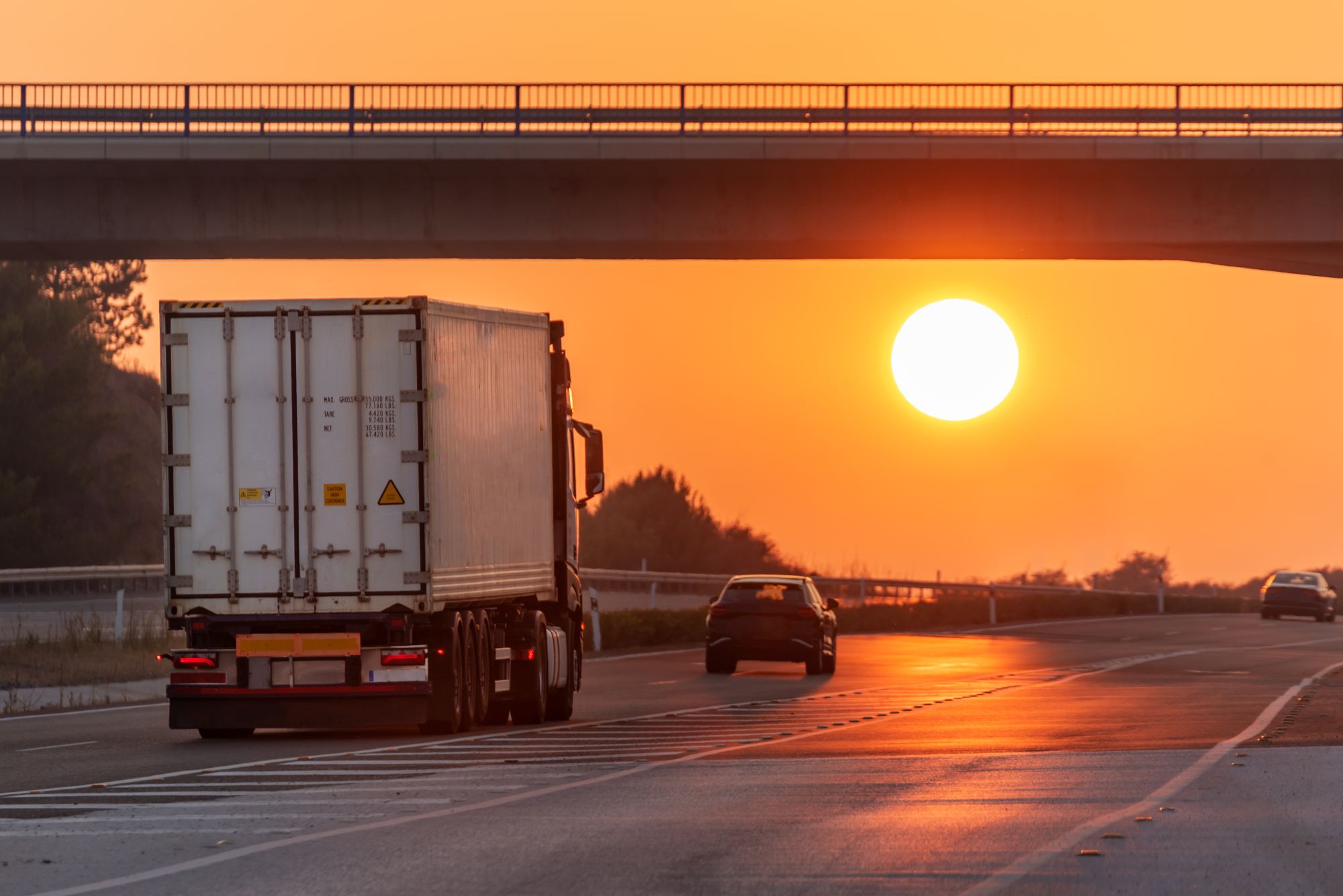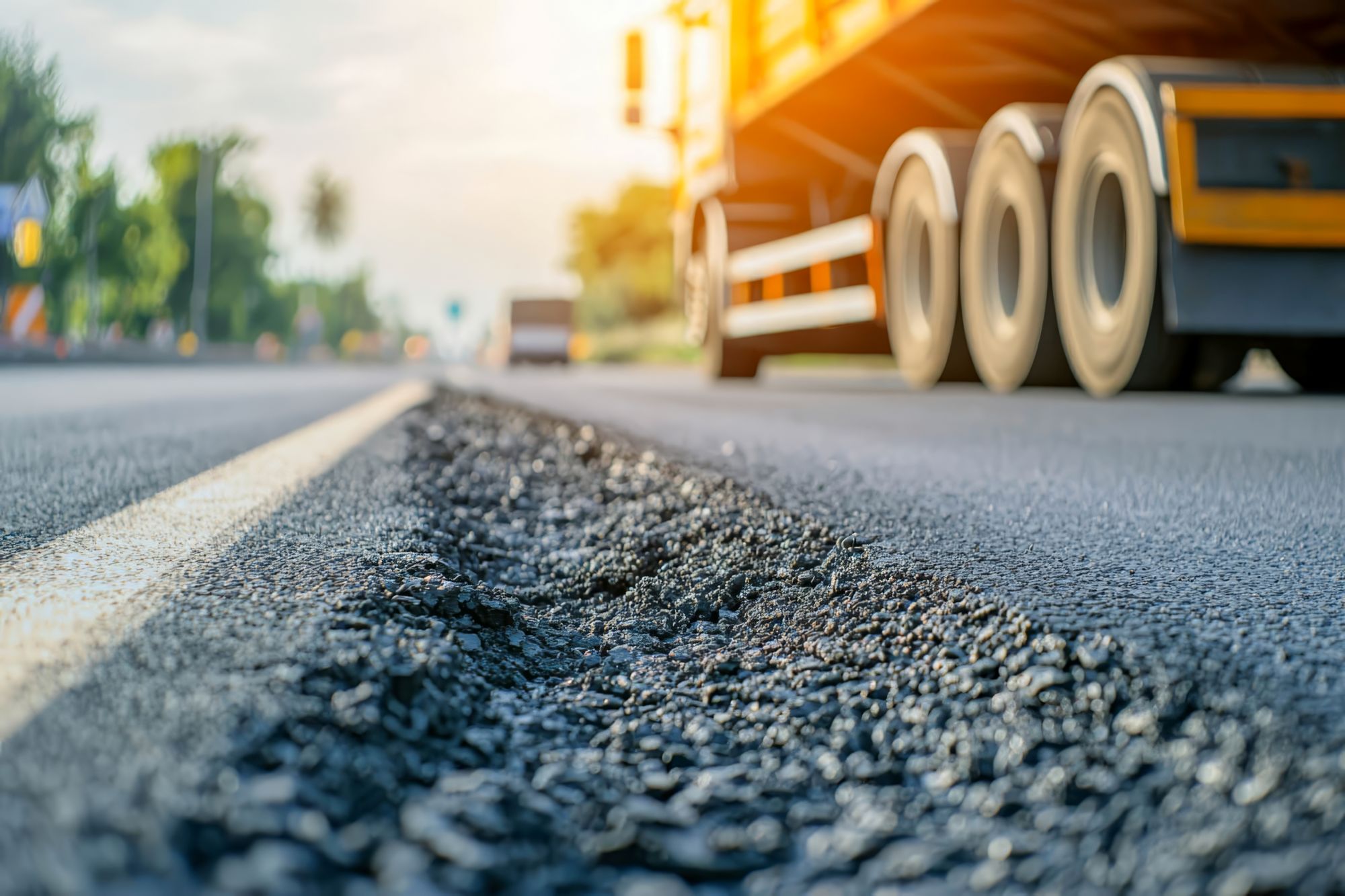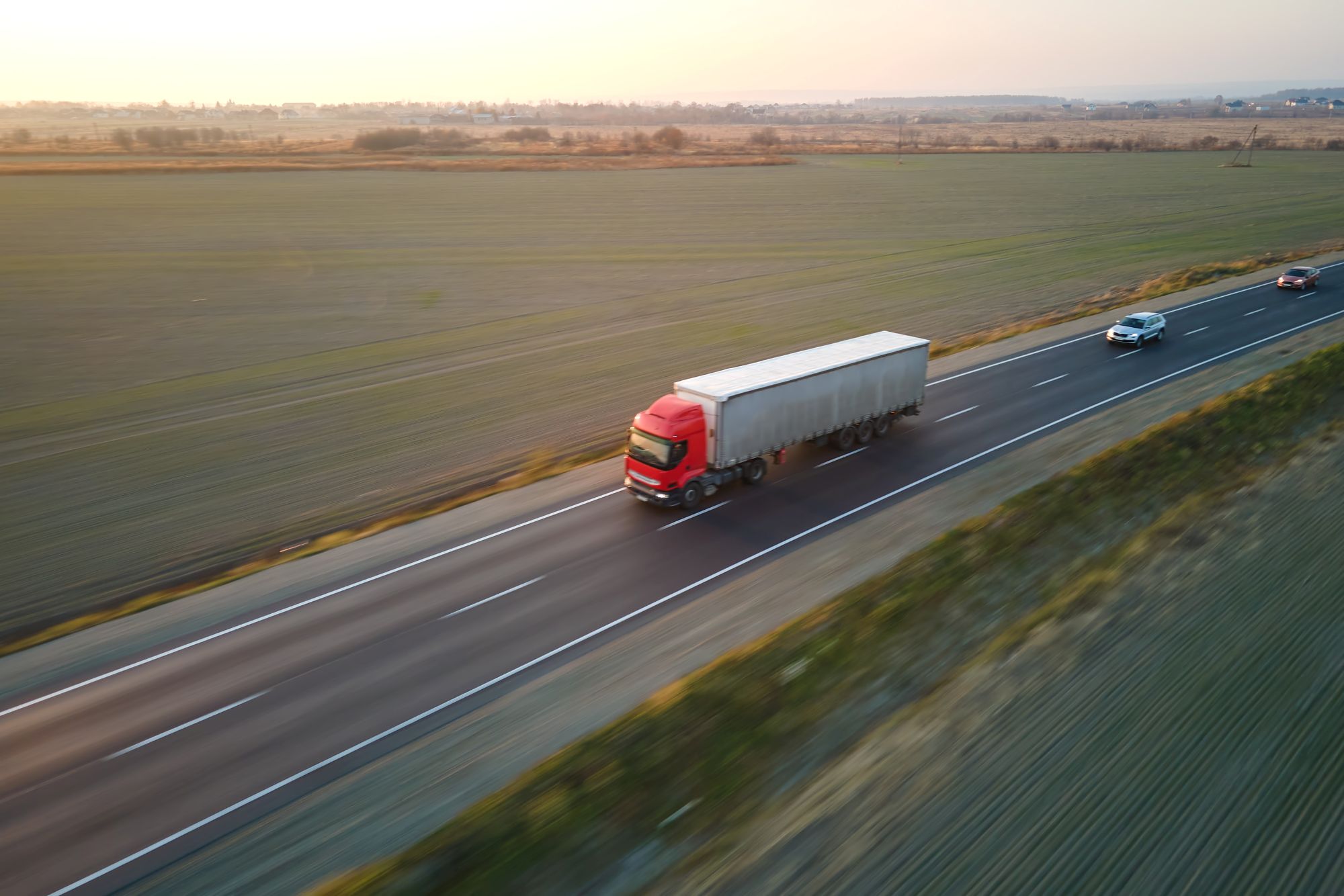
Guest
Kaip Europos karščio banga veikia judumą: kaip išlikti priekyje
Sukurta: 31-07-2025
•
Atnaujinta: 31-07-2025
Europos keliuose kepina, o karštis tik didėja. 2025 m. liepos mėn. visame žemyne užfiksuota rekordinė temperatūra, infrastruktūros gedimai ir neregėto masto transporto sutrikimai. Automobilių parkų operatoriams ir profesionaliems vairuotojams šis iššūkis nebėra teorinis. Ekstremalus karštis jau čia ir jis realiuoju laiku keičia judumo kraštovaizdį.
Daug rašyta apie šių metų karščio bangos poveikį sveikatai ir klimato pokyčius. Tačiau kur kas mažiau dėmesio skirta tam, kaip ji veikia logistiką, krovinių vežimo tinklus ir žmones, kurie rūpinasi prekių judėjimu per sienas.
Šiame straipsnyje nagrinėjama, kaip karščio bangos trikdo Europos kelių transporto sektorių - nuo tirpstančio asfalto ir įtrūkusių greitkelių iki miškų gaisrų, vairuotojų saugumo problemų ir pristatymo vėlavimų - ir pateikiama praktinių patarimų, kaip padėti automobilių parkams išlikti darbingiems, atspariems ir vienu žingsniu priekyje.
Karščio bangos tampa nauja norma
Pasaulinės meteorologijos organizacijos World Meteorological Organization duomenimis, Europoje nuolat tvyro itin dideli karščiai, kai temperatūra gerokai viršija sezonines normas. Pirmąją 2025 m. liepos savaitę Vokietijoje užfiksuota aukštesnė nei 39 °C, o Ispanijoje ir Portugalijoje per mėnesį temperatūra viršijo 46 °C. Visa Europa šyla maždaug dvigubai greičiau nei vidutiniškai pasaulyje.
Tokios sąlygos ne tik nepatogios, bet ir trukdo darbui. Logistikos verslo cituojami tyrimai rodo, kad karščio bangos yra vis dažniau pasitaikantis rizikos veiksnys krovinių gabenimo operacijoms, nes mažina vairuotojų gerovę, kenkia kroviniams ir vėluoja pristatyti krovinius.
Todėl tampa vis sunkiau saugiai gabenti temperatūrai jautrius krovinius, tokius kaip maistas, vaistai ir elektronika. Vežėjai pastebi, kad didėja krovinių sugedimo lygis ir baudos už pavėluotą pristatymą. Padėtis ypač sudėtinga tose vietovėse, kur elektros tinklai yra įtempti dėl padidėjusio šaldymo poreikio, o tai mažina šaldymo grandinės patikimumą.
Tirpstantys keliai ir sutrūkinėję greitkeliai
Vienas aiškiausių ženklų, kad karštis daro žalą mobilumui, pasirodė liepos pradžioje, kai dėl šiluminio plėtimosi pradėjo skilinėti Vokietijos greitkelių tinklo dalys. Be kitų greitkelių A1, A9 ir A10 atkarpos buvo uždarytos skubiam remontui, nes betoninės plokštės įlinkdavo ir plyšdavo jungtys - tai buvo tiesioginė užsitęsusios karščio bangos šalyje pasekmė.
Kylant žemės temperatūrai ir džiūstant augmenijai, miškų gaisrai taip pat tampa įprastu ir pavojingu Europos vasaros reiškiniu. Vikipedijos 2025 m. Europos karščio bangos santraukoje rašoma, kad pietų Ispanijoje, Vokietijoje ir Graikijoje kilo miškų gaisrai, dėl kurių teko masiškai evakuotis, laikinai uždaryti pagrindinius kelius ir pasienio punktus.
2025 m. birželį dėl gaisrų buvo uždarytas A939 kelias Škotijoje, o Prancūzijoje dėl gaisrų buvo uždaryti keli keliai ir kelių tuneliai aplink Marselį. Dėl šių uždarymų ne tik kyla eismo chaosas - tai reiškia, kad sunkiasvoriai sunkvežimiai turi keisti maršrutą, dažnai siaurais, nepritaikytais keliais, dėl kurių kelionės trukmė gali pailgėti keliomis valandomis.
Be to, dūmai blogina vairuotojų matomumą ir kelia pavojų sveikatai, ypač tiems, kurie ilgai sėdi kabinoje, kurioje oro filtravimas nepakankamas. Be to, daugelyje vietovių avarinės tarnybos yra perpildytos, todėl vėluojama išvalyti paveiktus kelius arba nukreipti dėmesį į kitus kelius.

Vairuotojo sauga
Kartu su rizika infrastruktūrai kyla ir rizika žmonėms. Profesionalūs vairuotojai yra ypač pažeidžiami karščio streso, dehidratacijos ir nuovargio. SNAP savo vasaros vadove vairuotojams aprašomi perkaitusių kabinų pavojai, ilgos darbo valandos aukštoje temperatūroje ir aušinimo sistemų bei poilsio svarba.
Daugelyje Pietų ir Rytų Europos šalių pakelėse esančių įrenginių vis dar nėra pakankamai įrengta, kad padėtų vairuotojams užtikrinti gerą savijautą per karščio bangas. Neužtikrinamos kondicionuojamos poilsio stotelės, pavėsyje esančios automobilių stovėjimo aikštelės ir patikima prieiga prie vandens, todėl SNAP patikrintų, patogių vietų tinklas tampa svarbesnis nei bet kada anksčiau.
"Šios vasaros karščio banga - tai skambutis, - sako SNAP Europos pardavimų vadovė Raquel Martinez. "Europos transporto sistemos buvo sukurtos vėsesniam klimatui. Tačiau mes nesiruošiame grįžti atgal. Gerai klestės tie laivynai, kurie prisitaikys dabar - naudodamiesi tinkamomis priemonėmis, tinkamomis poilsio strategijomis ir tinkamomis technologijomis."
Visoje Europoje pradedami taikyti sunkvežimių draudimai
Reaguodamos į karščius, kelios šalys įvedė arba pratęsė karščio sukeltus sunkvežimių draudimus. Kaip praneša TrafficBan.com, Bulgarija ir Vengrija 2025 m. liepos mėn. pakilus oro temperatūrai įvedė dienos apribojimus sunkiasvorėms transporto priemonėms. Apribojimai taip pat buvo taikomi sunkiasvorėms transporto priemonėms tam tikrais pažeidžiamais keliais tam tikrais laikotarpiais.
Be to, vasaros spūstis didina ir dėl nacionalinių švenčių Vokietijoje, Prancūzijoje, Lenkijoje ir Italijoje uždrausti sunkvežimių eismas. Išsamią informaciją galima rasti svetainėje Trafficban.com, kurioje pateikiami regioniniai ir laiko apribojimai visame žemyne.
Vairuotojams ir planuotojams šie draudimai sukuria daugybę atitikties zonų ir laiko apribojimų, todėl reikia atidžiai orientuotis ir naudotis naujausiomis planavimo priemonėmis.
Draudimo poveikis
Didėjant ekstremalių karščių keliamai rizikai, draudikai pradeda iš naujo vertinti savo riziką. Tikėtina, kad tai turės įtakos visoms draudimo įmokoms. Prekių gabenimo draudimas patiria spaudimą, ypač dėl temperatūrai jautrių krovinių, nes daugėja pretenzijų dėl sugedimo ir praleistų pristatymo terminų. Transporto priemonių draudimo išlaidos taip pat gali padidėti, nes daugėja reikalavimų dėl su karščiu susijusių gedimų ir nelaimingų atsitikimų.
Tuo tarpu vis dažniau tikrinama darbdavių atsakomybė, ypač jei vairuotojai ar darbuotojai patiria sveikatos sutrikimų dėl karščio ir netinkamų socialinių sąlygų. Kartu šios tendencijos gali reikšti didesnes draudimo įmokas ir sunkesnes derybas dėl atnaujinimo operatoriams, neturintiems aiškių atsparumo planų.
Kaip užbėgti už akių karščio bangoms
SNAP tiki, kad svarbiausia, kaip įveikti Europos karščio bangas, yra pasiruošimas, planavimas ir aktyvus gerovės valdymas.
Štai ką gali padaryti operatoriai:
Planuokite pagal temperatūrą ir vietovės reljefą: Naudokite realaus laiko orų duomenis, kad padėtumėte vairuotojams išvengti rizikingų maršrutų.
Aprūpinkite vairuotojus reikiamomis sąlygomis: Aprūpinkite transporto priemones vandeniu, pavėsio įranga ir avariniais aušinimo rinkiniais.
Kiekvieną dieną tikrinkite taisykles: Naudodamiesi tokiais patikrintais šaltiniais kaip Trafficban.com, būkite informuoti apie besikeičiančius sunkvežimių draudimus kitose šalyse.
Atptimizuoti poilsio stoteles: Skatinkite vairuotojus naudotis tokiomis programėlėmis kaip [intruck] (https://intruckapp.com/), kad visoje Europoje rastumėte gerai įrengtas oro kondicionieriais aprūpintas stoteles.
Transporto priemonių priežiūra dėl karščio: Atlikdami techninę priežiūrą skirkite ypatingą dėmesį padangoms, aušinimo sistemoms ir akumuliatoriaus veikimui, ypač elektrinių ar hibridinių transporto priemonių.
Peržiūrėkite draudimo ir rizikos planus: Užtikrinkite, kad polisuose būtų atsižvelgta į su klimato kaita susijusius vėlavimus, krovinio sugadinimą ir gaisro padarytą žalą.
Pradėkite planuoti karščio bangas jau šiandien
Peržiūrėkite mūsų [interaktyvų SNAP žemėlapį] (https://snapacc.com/map/) arba atsisiųskite [intruck programėlę] (https://intruckapp.com/) dar šiandien. Tūkstančiai patikimų partnerių visoje Europoje - tai jūsų trumpasis kelias į saugesnes stoteles, kad ir kokia būtų temperatūra.



